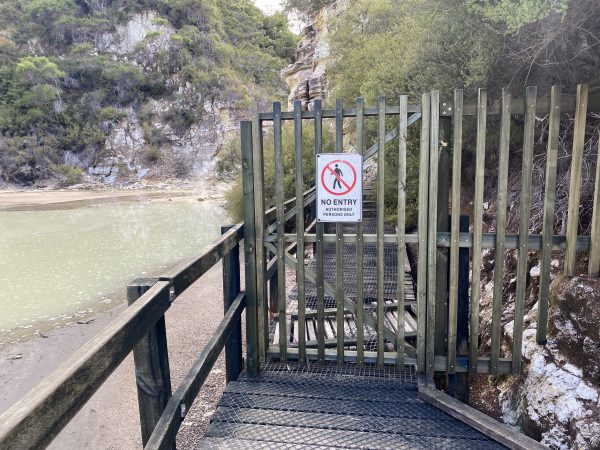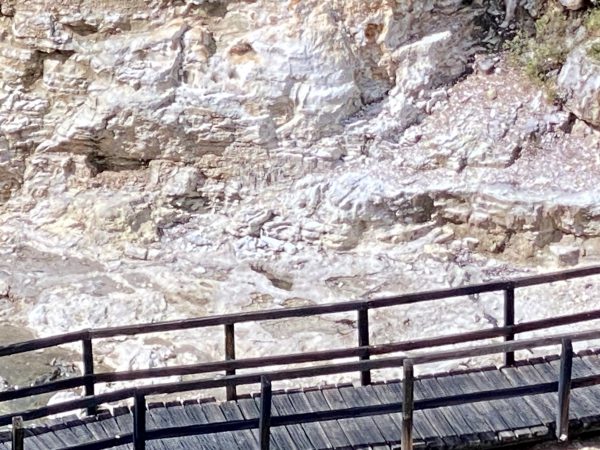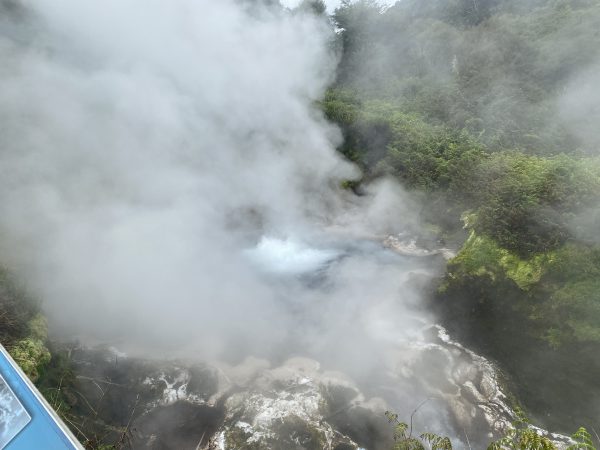Posted on
Tag: Waiotapu
Posted on
Posted on
Waiotapu Mudpots, Waiotapu, New Zealand
Posted on
Observations for 2023 March 05
Today it was off to Waiotapu. Most of the features were not much different from our visit four years ago. The biggest change was that there was now some runoff down the Primrose Terrace, especially the bottommost, narrow portion. The water in Devil's Bath/Roto Karikitea is the same industrial green as before.
The other difference is that the walkway past the Waitapu Geyser is closed off. That was a huge disappointment. But fortunately, the geyser is still visible, but from a high, distant vantage point. It is easy to pick out if you know where to look.
From what we could see, the area around the vent was dry. This is probably a good indication that we were there in the middle of the cycle. Late enough that the water from the previous eruption has evaporated, and early enough that the cycles of overflow had not yet started. We decided to not stick around.
We decided against going to see the induced eruption of Lady Knox Geyser. Instead, once the tours stopped around 09:45, we pretty much had the area to ourselves for over an hour.
Unlike the previous visit, there didn't seem to be a huge mass of people appearing after that eruption. The parking lot seemed mostly quiet as we had a picnic lunch, and I didn't see any bus tours during the afternoon. That may be normal, but it seemed that the closure during the middle of the week would be justified for a lack of visitation.
Next up was Waikite, a small area we missed last time. It's the home of Te Manaroa, a boiling cauldron discharging 40-50 liters per second. It's right next to a road, but down in a gully so that the steam collects there, making observations difficult. It continuously boils, occasionally surging to about two meters, although the amount of water being discharged doesn't seem to change.
Nearby is another, small boiling spring. Above it is the discharge from a third spring not visible from the walkway.
Note that there is a NZ$4 entry fee, but this feature is interesting enough to be worth it.
After that, we stopped in at Te Kopia. The mudpots are liquid, with little to no activity. They are also a pale blue color, as if they are in the process of clearing.
The walkway to the boardwalk appears to not have had any vegetation cut back since our last visit four years ago. The stairway was overgrown with wild berry vines with little stickers.
Our drive back from grocery shopping took us past the end of Fenton St. There is a parking lot there where the geysers of Te Puia are sort of visible through a fence when they erupt. We arrived at 17:15 with Te Tohu/Prince of Wales Feathers in eruption. We waited for about fifteen minutes as it erupted, then Pohutu started at 17:31 A few minutes later, at 17:40, we saw the tops of jets of water from Kereru. I would hope that that would be an indication that we will be able to see Kereru up close in the coming days.



